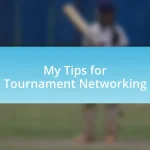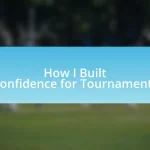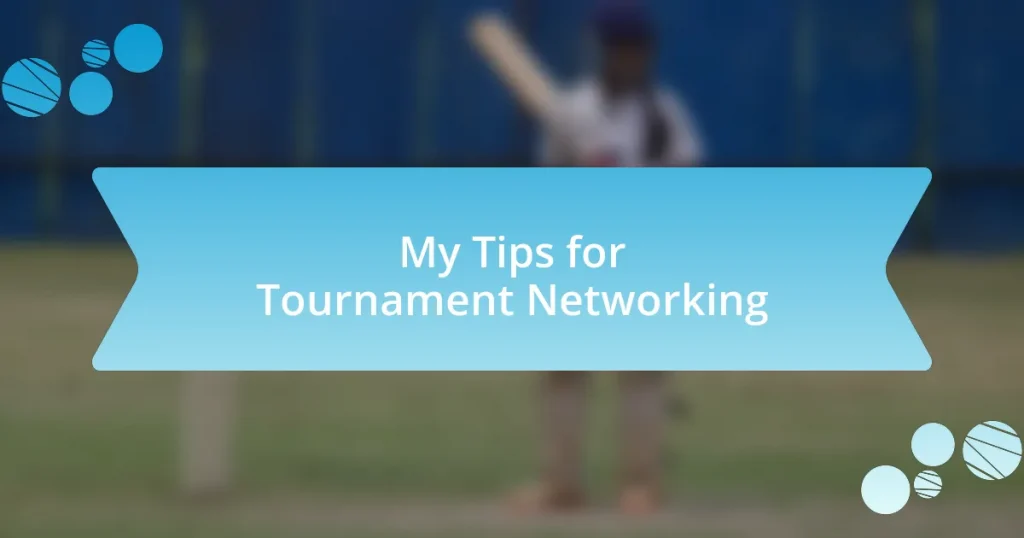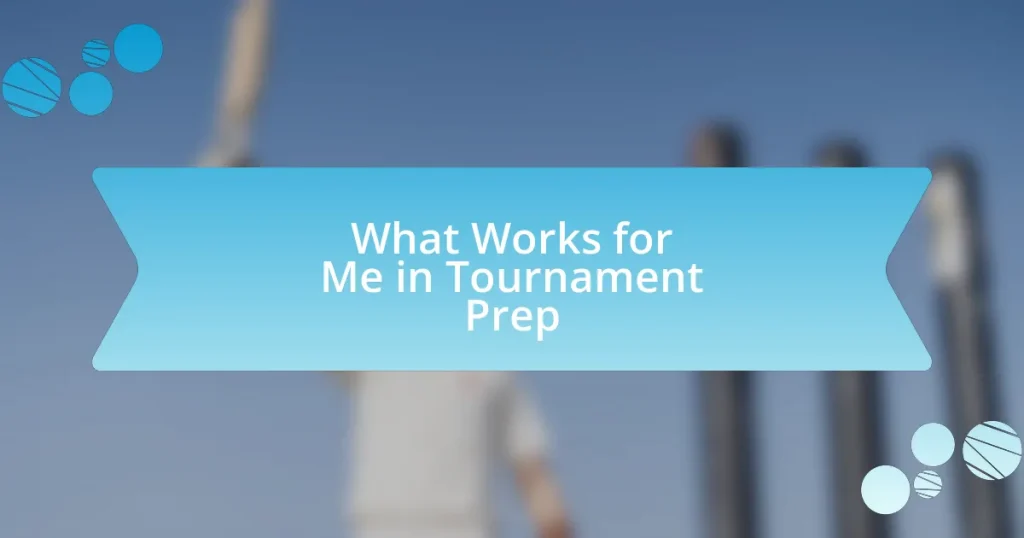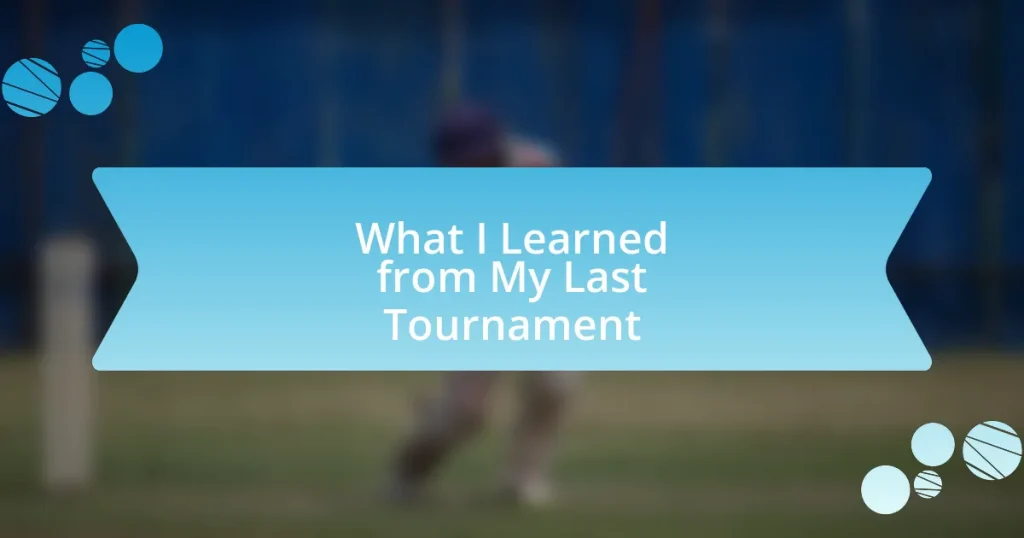Key takeaways:
- Define your networking goals to foster meaningful connections and direct your efforts purposefully.
- Research attendees before events to tailor conversations and enhance confidence.
- Engage in meaningful conversations by asking open-ended questions that reveal personal experiences.
- Follow up after the event with personalized messages and relevant resources to nurture connections.
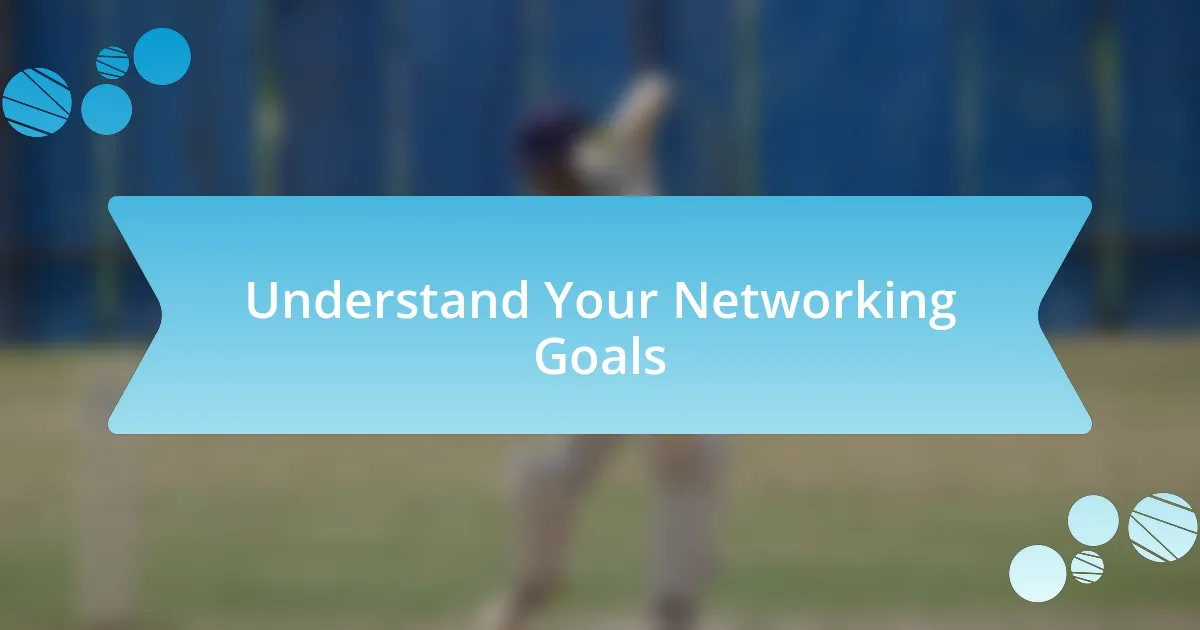
Understand Your Networking Goals
When I first started attending tournaments, I approached networking casually, thinking it just meant collecting business cards. However, I quickly realized that understanding my specific networking goals was crucial. What did I want to achieve? Was it mentorship, collaboration, or perhaps seeking new opportunities? This realization transformed my interactions from surface-level exchanges to meaningful connections.
Reflecting on my experiences, I remember a particular tournament where my goal was to find potential partners for a project. With that clear intention, I navigated conversations differently—asking pointed questions and genuinely listening for opportunities. Have you ever felt lost in a crowd, wondering who to approach? Setting a target helps streamline your efforts and ensures you invest your energy where it counts.
Networking isn’t just about making connections; it’s about fostering relationships that align with your aspirations. When I focused on my aims, those conversations felt more authentic and fulfilling. I’d urge you to take a moment now: what are you hoping to achieve by networking? Identifying your objectives can be a game-changer in how you engage with others at tournaments.
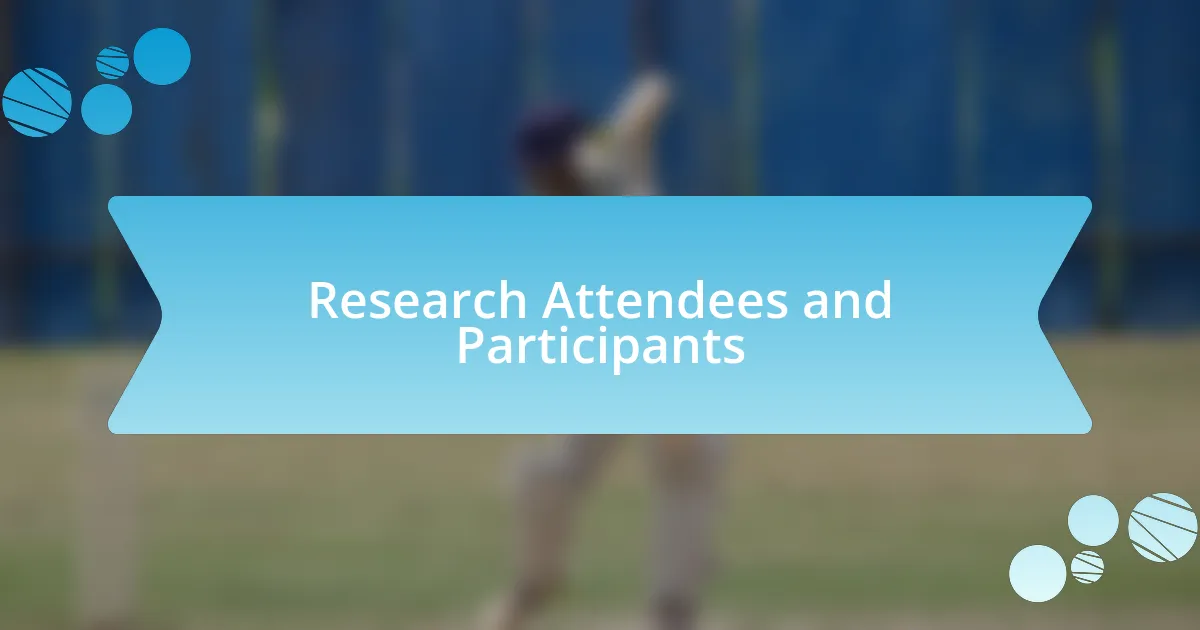
Research Attendees and Participants
Researching attendees and participants is a vital step in effective tournament networking. I’ll never forget one tournament when I took the time to review the attendee list beforehand. I discovered several key individuals whose work I admired, and I could tailor my conversations around their interests and experiences. This preparation not only made my interactions feel more purposeful but also boosted my confidence as I approached these individuals.
Here are some tips to effectively research attendees and participants:
- Check the event website for an attendee list or participant profiles.
- Use LinkedIn to explore backgrounds and common connections.
- Look for social media interactions or posts regarding the event.
- Identify any panels or discussions featuring participants to understand their expertise.
- Note down specific topics or projects they are passionate about.
By investing time in understanding who will be there, I found my conversations flowed more easily, transforming initial introductions into rich exchanges. When you know who you’re meeting, it’s like having a roadmap in unfamiliar territory.
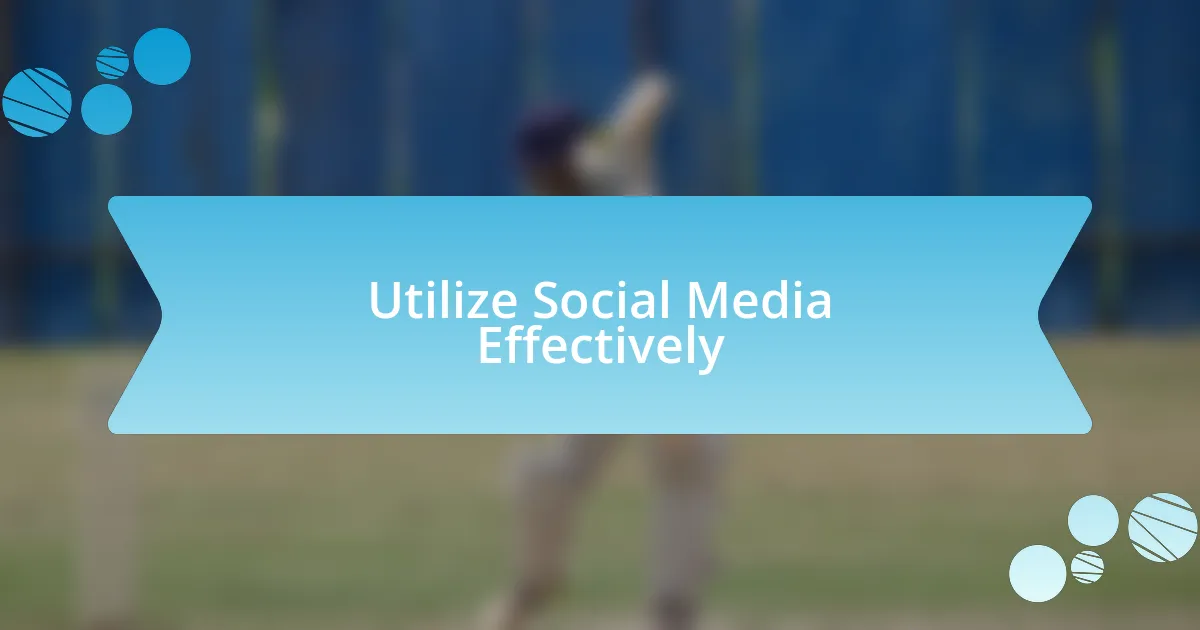
Utilize Social Media Effectively
Utilizing social media effectively is crucial in tournament networking. In my experience, platforms like Twitter and LinkedIn serve as powerful tools for connecting with fellow attendees. For instance, I once reached out to a thought leader in my field through a direct message on Twitter just days before an event. That short conversation led to an engaging discussion at the tournament, which opened up multiple collaboration opportunities.
Another aspect to consider is the importance of engaging with event-specific hashtags. During one particular tournament, I tweeted using the official hashtag and quickly received replies from attendees I hadn’t previously met. This simple interaction sparked many conversations not only during the event, but also post-tournament, expanding my network and keeping the discussions alive long after everyone left.
Lastly, don’t forget to follow up with the connections you make online. After a recent tournament, I sent personalized LinkedIn requests to those I had spoken with, reminding them of our conversations. It’s amazing how a simple message can solidify a relationship and make future interactions feel more familiar.
| Platform | Usage Example |
|---|---|
| Connect via DM for a pre-event introduction. | |
| Follow up with connection requests and personalized messages. | |
| Share event experiences using the event hashtag. | |
| Facebook Groups | Discuss event topics and network with industry professionals. |
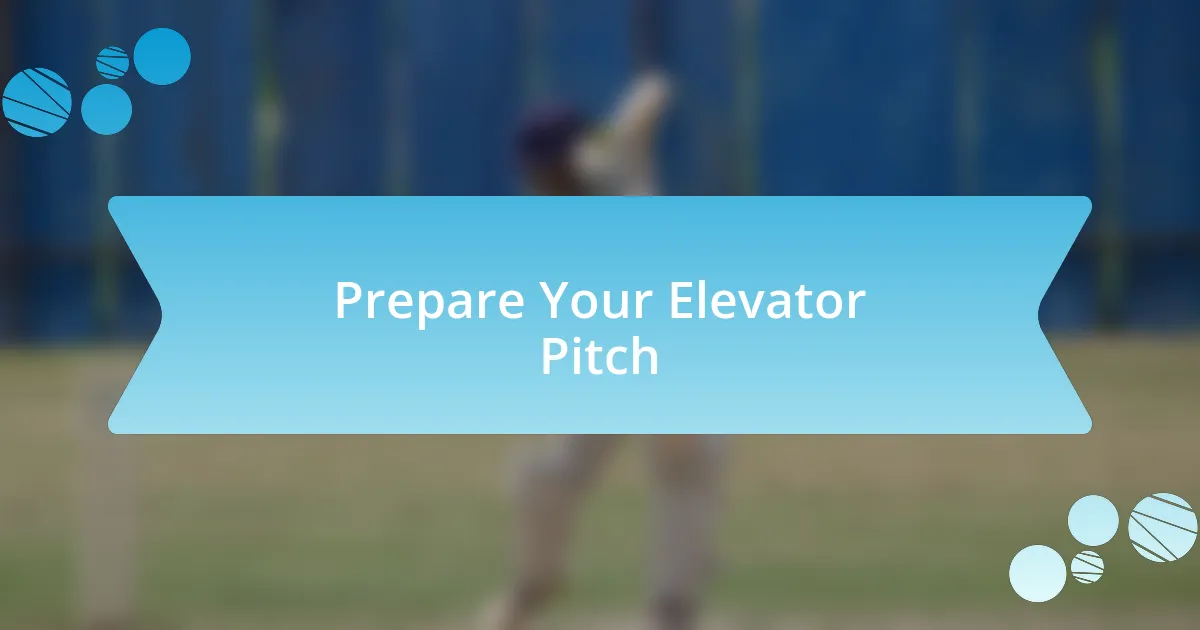
Prepare Your Elevator Pitch
Your elevator pitch is your personal introduction to others. It’s that brief moment when you get to tell people who you are and what you do. From my experience, crafting a compelling pitch takes thoughtful consideration; what will catch someone’s attention in the first 30 seconds? I often suggest focusing on a unique personal story or an impactful achievement, something that fosters a connection right from the start.
When I first learned this, I used to freeze up when someone asked what I did. But then I tried sprinkling in a story about a major project I was part of, emphasizing the challenges and the outcomes. This shifted the conversation from a simple exchange to a deeper dialogue. Connecting with others in a meaningful way can be so much more inviting than listing off your job title or resume details.
Consider practicing your pitch with friends or family before the event. It may sound a bit awkward at first, but it’s essential for building confidence. Have you ever noticed how authenticity shines through in casual conversations? That spontaneity can be an excellent foundation for your pitch. I still recall practicing with a colleague, and how his feedback transformed my nervousness into excitement for sharing my story with the world.
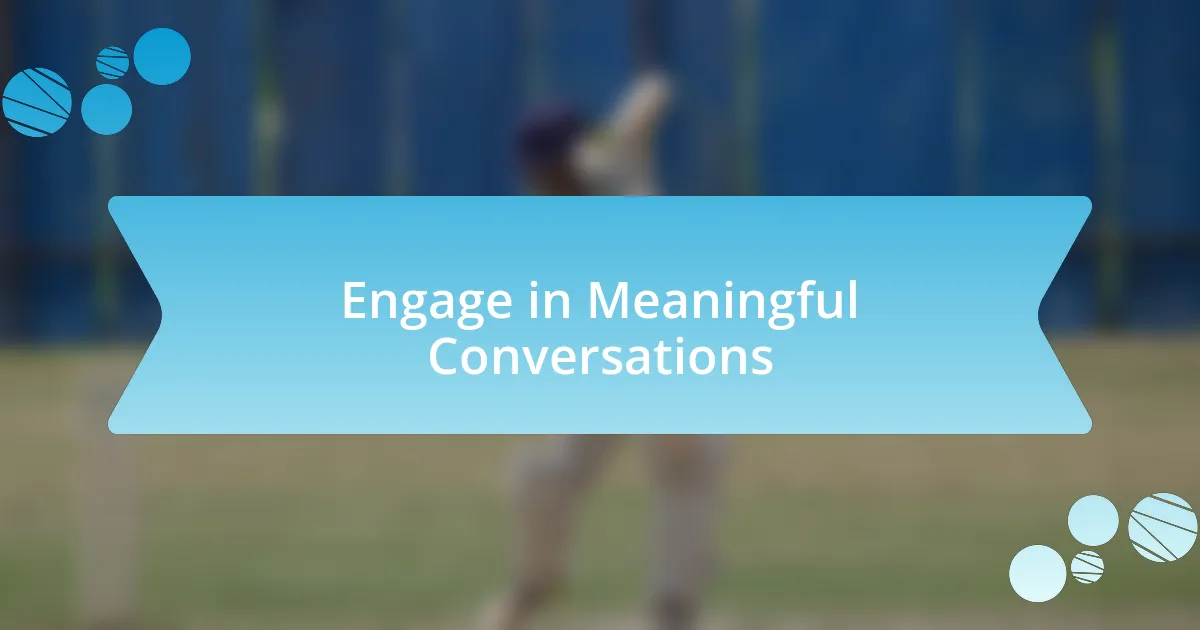
Engage in Meaningful Conversations
Engaging in meaningful conversations goes beyond small talk; it’s about making those connections that resonate. I’ve found that asking open-ended questions can really illuminate a person’s passions and experiences. Instead of just asking where someone has worked, I often inquire about what inspires their work or what challenges they’ve faced along the way. This not only reveals their journey but also helps to establish a deeper connection.
One time at a networking event, I met a fellow attendee who mentioned a setback in their career. Rather than glossing over it, I asked how that experience shaped their professional path. Their eyes lit up as they shared insights that revealed their resilience and creativity. That conversation became a powerful exchange, where we both felt heard and valued. Have you ever shared a personal challenge and felt the relief of connection that comes from vulnerability? That moment can really solidify a relationship.
It’s easy to get caught up in exchanging titles and business cards, but I believe true networking thrives on authenticity. I strive to be genuinely curious about others, and more often than not, I find that people appreciate the effort. Remember that profound conversations can create lasting impressions, not just for you but for the person you’re speaking with. When was the last time you had a conversation that lingered in your mind long after it ended? These are the moments that can define your networking experience.
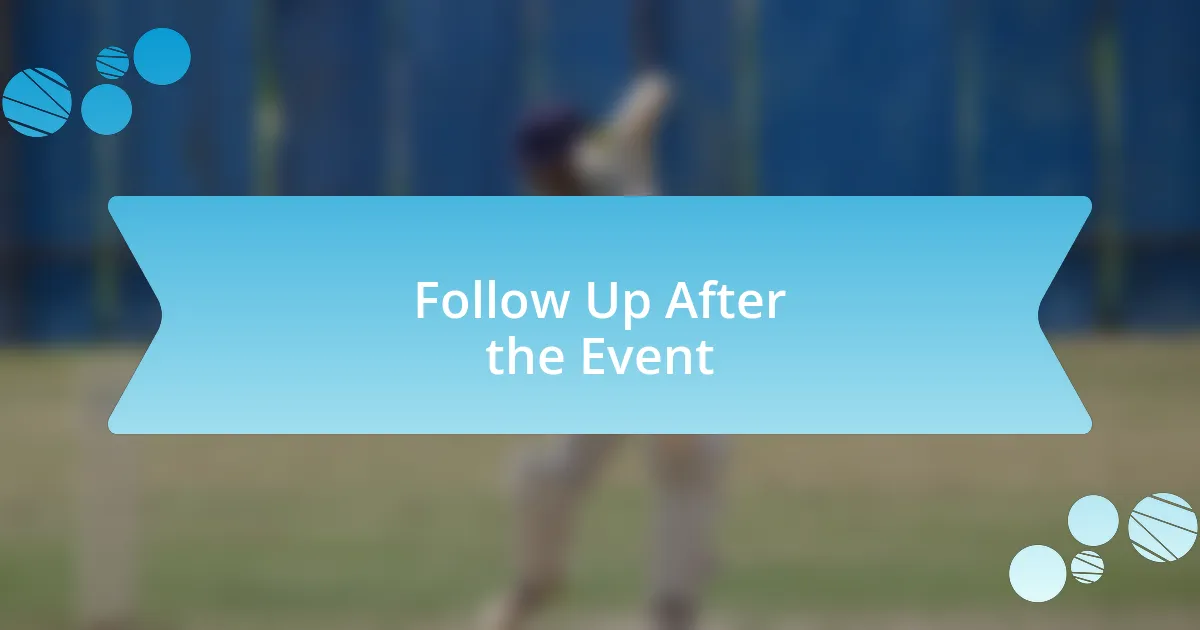
Follow Up After the Event
Following up after the event is crucial for nurturing the connections you’ve made. I remember sending a simple message to a contact I met at a tournament, recalling a specific detail from our conversation. It wasn’t just polite; it sparked a dialogue that deepened our relationship. How often do we let valuable connections fizzle out just because we don’t take that extra step?
After sending a follow-up, I always find it helpful to share relevant resources or insights that align with the interests discussed during the event. This not only adds value to the conversation but also demonstrates that I am genuinely invested in their success. Have you considered how a thoughtful article or a relevant podcast link can create an opportunity for further engagement?
Additionally, I like to suggest meeting for coffee or a virtual chat after the initial follow-up. This personal touch can make a significant difference, transforming a fleeting connection into a meaningful partnership. Have you considered that the act of reaching out could lead to unexpected collaborations? It’s this proactive approach that has often led me to opportunities I never anticipated.
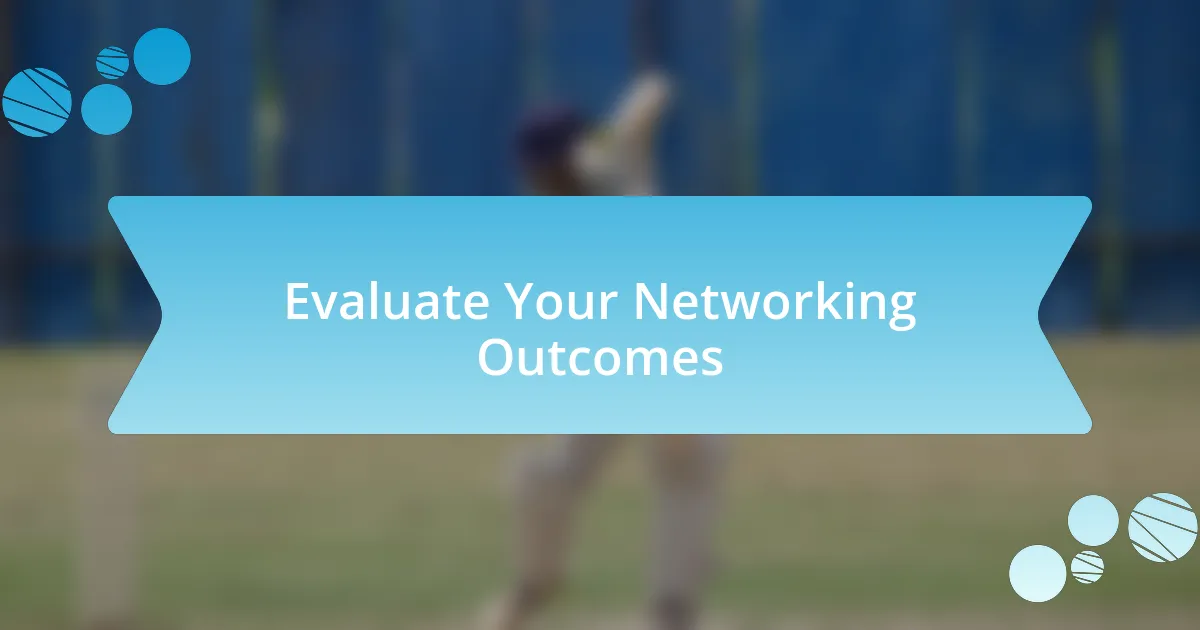
Evaluate Your Networking Outcomes
Evaluating the outcomes of your networking efforts is often overlooked but incredibly important. I recall attending a tournament where I felt overwhelmed by the number of people I met. After the event, I took a moment to analyze who I connected with and asked myself which conversations were most impactful. This reflection helped me identify key relationships worth nurturing.
Sometimes, I jot down notes about each interaction right after the event. It might feel a bit tedious, but trust me, it pays off. By recalling specific topics or shared interests, I can tailor my follow-up messages, making them more relevant and personal. Have you ever considered how a small detail can turn a generic message into a meaningful one?
As I review my networking outcomes, I also consider any actions taken after those connections were made. Did I receive responses? Did any conversations lead to future collaborations? I’m always curious to see how these interactions evolve. This continual assessment not only sharpens my networking approach but also encourages me to embrace new opportunities as they arise.


